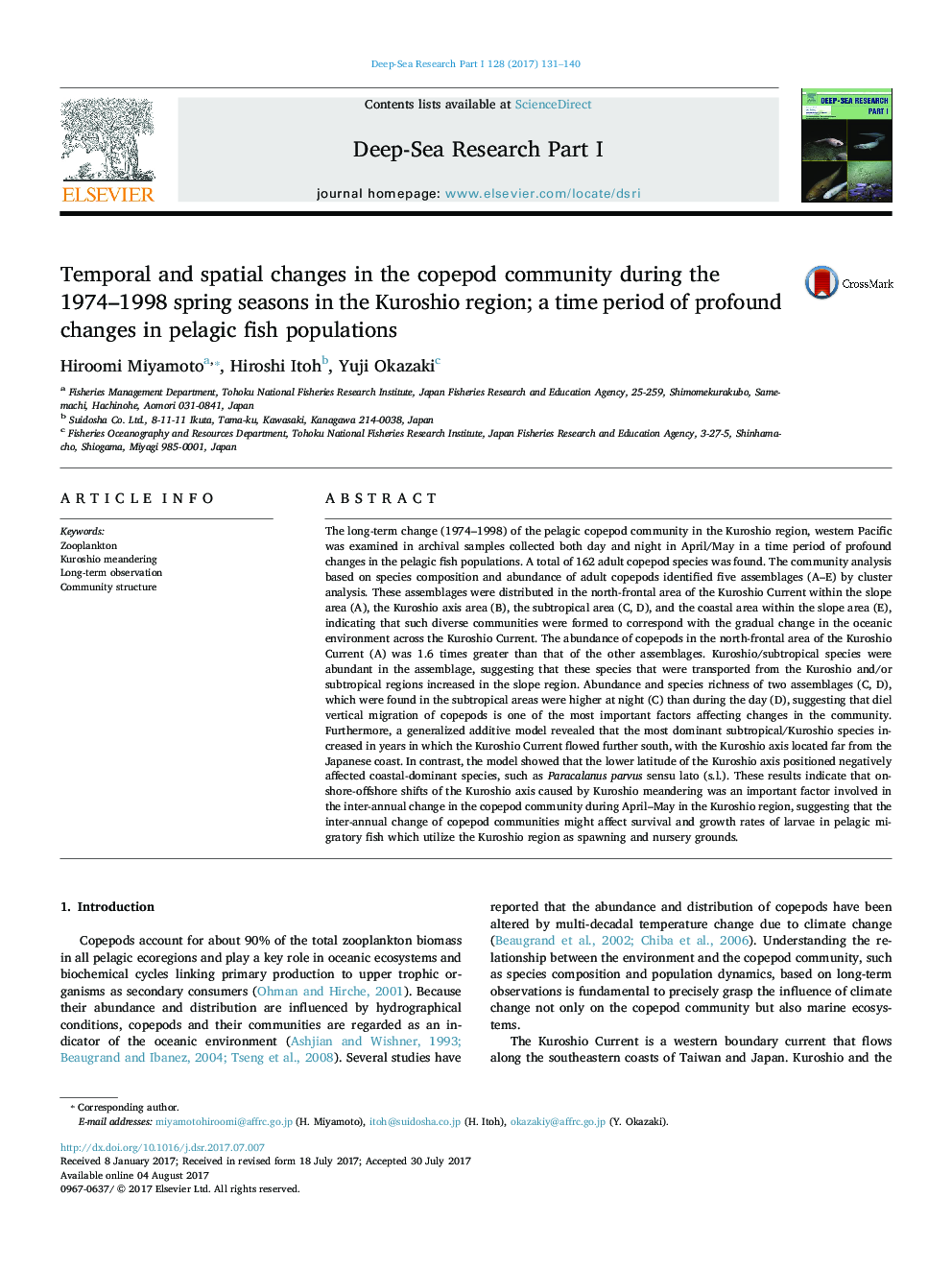| Article ID | Journal | Published Year | Pages | File Type |
|---|---|---|---|---|
| 5764614 | Deep Sea Research Part I: Oceanographic Research Papers | 2017 | 10 Pages |
â¢Spatiotemporal change of the copepod community was studied in the Kuroshio region during 1974-1998.â¢The highest copepod abundance was in the north-frontal area of the Kuroshio Current.â¢Kuroshio and subtropical copepod species were abundant in the north-frontal area.â¢Inter-annual change in distance between the Kuroshio axis and coast affected the copepod community.
The long-term change (1974-1998) of the pelagic copepod community in the Kuroshio region, western Pacific was examined in archival samples collected both day and night in April/May in a time period of profound changes in the pelagic fish populations. A total of 162 adult copepod species was found. The community analysis based on species composition and abundance of adult copepods identified five assemblages (A-E) by cluster analysis. These assemblages were distributed in the north-frontal area of the Kuroshio Current within the slope area (A), the Kuroshio axis area (B), the subtropical area (C, D), and the coastal area within the slope area (E), indicating that such diverse communities were formed to correspond with the gradual change in the oceanic environment across the Kuroshio Current. The abundance of copepods in the north-frontal area of the Kuroshio Current (A) was 1.6 times greater than that of the other assemblages. Kuroshio/subtropical species were abundant in the assemblage, suggesting that these species that were transported from the Kuroshio and/or subtropical regions increased in the slope region. Abundance and species richness of two assemblages (C, D), which were found in the subtropical areas were higher at night (C) than during the day (D), suggesting that diel vertical migration of copepods is one of the most important factors affecting changes in the community. Furthermore, a generalized additive model revealed that the most dominant subtropical/Kuroshio species increased in years in which the Kuroshio Current flowed further south, with the Kuroshio axis located far from the Japanese coast. In contrast, the model showed that the lower latitude of the Kuroshio axis positioned negatively affected coastal-dominant species, such as Paracalanus parvus sensu lato (s.l.). These results indicate that onshore-offshore shifts of the Kuroshio axis caused by Kuroshio meandering was an important factor involved in the inter-annual change in the copepod community during April-May in the Kuroshio region, suggesting that the inter-annual change of copepod communities might affect survival and growth rates of larvae in pelagic migratory fish which utilize the Kuroshio region as spawning and nursery grounds.
